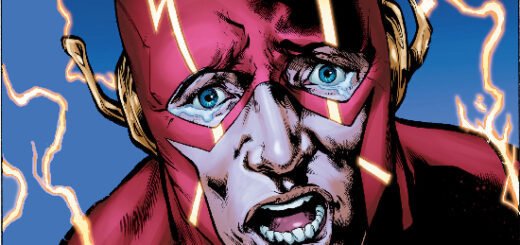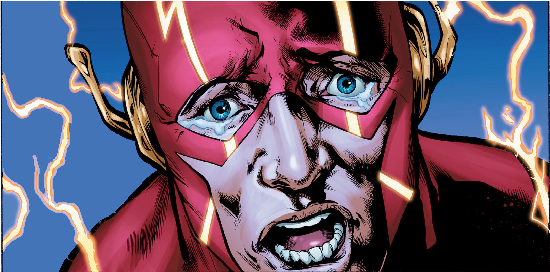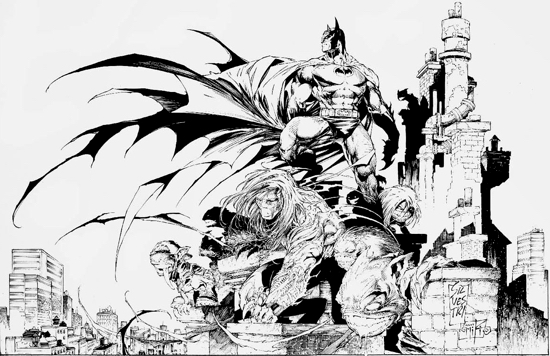Marc Alan Fishman: DC Rebirth Saved Me
Followers of this column are about to do a double take. They will question my sanity, my constitution, and whether I’m now a pod-person. But, heed my words, for they are true.
I traveled a long and hard road from my suburban home 45 minutes north to a different suburb so that I could make a transaction I’d honestly figured I wouldn’t make for years to come. After giving up mainstream comics (and weekly comic purchases) for two years, I handed over three bucks and picked up DC Universe Rebirth.
And I loved it.
Stop laughing at me.
In all the lead up to the big epic oh my Rao event I may have said a few … ahem… embittered words over the whole announcement. And to be fair, a lot of my points will remain valid in spite of my newfound like of Geoff Johns’ epic apology for the New52. It’s still a return to event-driven sales spikes, resetting books once again to #1, and making all of comic book fandom play a rousing game of WTF when it comes to figuring out what actually happened in continuity and what didn’t. But it doesn’t serve me anymore to deal in the macro. Let me crack open the book and figure out how Johns served me a plate of raw crow and I lapped it up like… oh, whatever eats a crow quickly.
Geoff Johns made his career (in my humble opinion) on harnessing emotion and sewing it into the rich tapestry of DC’s long-standing continuity. As he elevated the JSA, the Flash, Green Lantern, and other then-off-in-the-margin players through the DCU, Johns maintained a through-line of optimism… until Flashpoint. As the start of the New52 directive, Johns helped usher in the new era of DC Continuity, one meant to gel better with various other media properties, update languishing characters, and scrubbing off the dirt of one or two many crises. But in doing so, the New52 embraced the dour side of the DCU. Suddenly everything seemingly needed to carry a hipster-sheen and a splash of fuck you to it.
Rebirth acknowledges this and takes a smart step back. We’re reintroduced to the lost Wally West, and are given him as the anchor to whatever this new future holds. Across four chapters and the epilogue Wally searches for a single soul who can actually remember him. As the speed force (a penciling, inking, and coloring nightmare of a deus ex machina if ever there was one) threatens to tear Wally apart and disperse him to the next would-be speedster, we relive his complicated backstory in between scenes and snippets in the current continuity. And as Johns has relished in it before, again everything feels earned, and intelligently aligned.
Wally feels as if the world has simply forgotten emotions, states of being, and relationships. His attempt at anchoring to Batman (the clear progeny of analysis and logic) fails. A trip to visit the once-wielder of the Thunderbolt is met with confusion and fear, proving that legacy is no tether either. We’re even goaded into believing in the power of love, only to see Linda Park rebuke a waning Wally. It’s almost gut wrenching. Wally West, once a ward, then the hero… finally gives abandons hope.
And then Wally heads home for a final goodbye with the man who’d started it all. Barry Allen.
What follows between the two of them is a scene so potent I can’t do it justice in description. Johns and his cadre of astounding artists produced tears in my eyes over the bond between fictional characters I don’t even care that much about. While I do love (and own) Johns’ entire run on The Flash I’ve never claimed more than a passing fondness for the scarlet speedster(s). But here, across 60 sum pages, I’m now looking for the local chapter of the Speed Force Anonymous.
Hello, my name is Marc Alan Fishman, and I think I love the Flash. All of them.
But, even moreso, I love hope. Optimism. Love. Friendship. Kindness. Heroism. Everything I’d stopped seeing two years ago when I gave up comics. Here in Rebirth, I got it all back in spades, and I’ll be damned if I didn’t begrudgingly call the shop after finishing it to subscribe to a few books a month. More on that in future columns. Rebirth as a single stand-alone issue suffers only from the fact that it is meant as a one-and-done precursor, spinning off into 20+ books in the included checklist. This is where my review ends and the snark reemerges. Left to his own devices and narrative, Geoff Johns weaved a wonderful – dare I say masterful – tale. But in the context of the epic event, we’re still crushed under the weight of publishing profit mandates. The end of the issue is well earned, but truly to be continued. And ain’t no way I’m continuing it to the tune of that many new books.
But you see, fellow readers of Rebirth, you are likely asking… what of the 500-pound blue, naked elephant in the room – well, actually, Mars.
I’m going to leave you here, and politely toss the gauntlet of coverage to my ComicMix cohort, the magnificent Mindy Newell. Until next time, I’m your humbled and humiliated comic reader once again.































